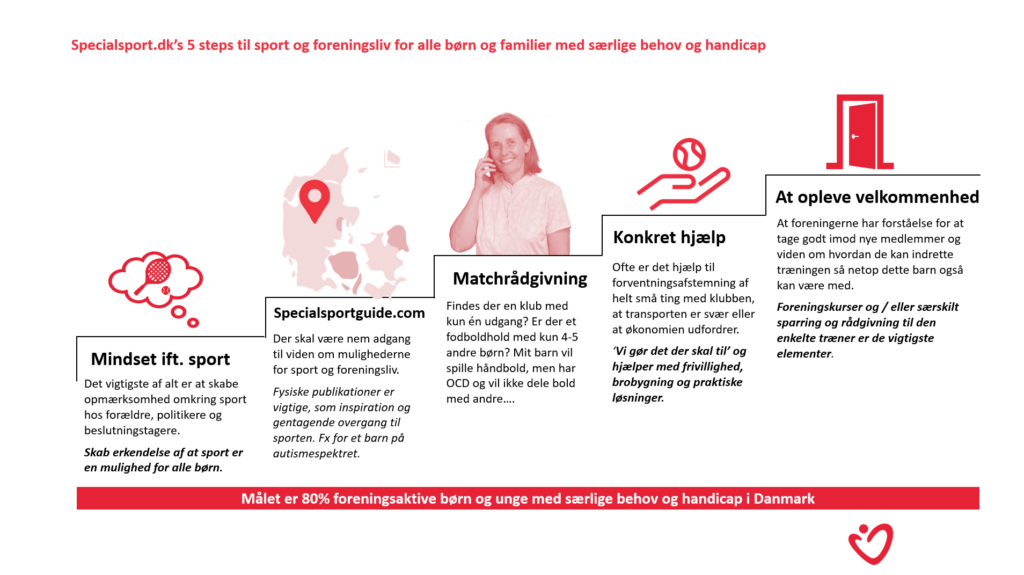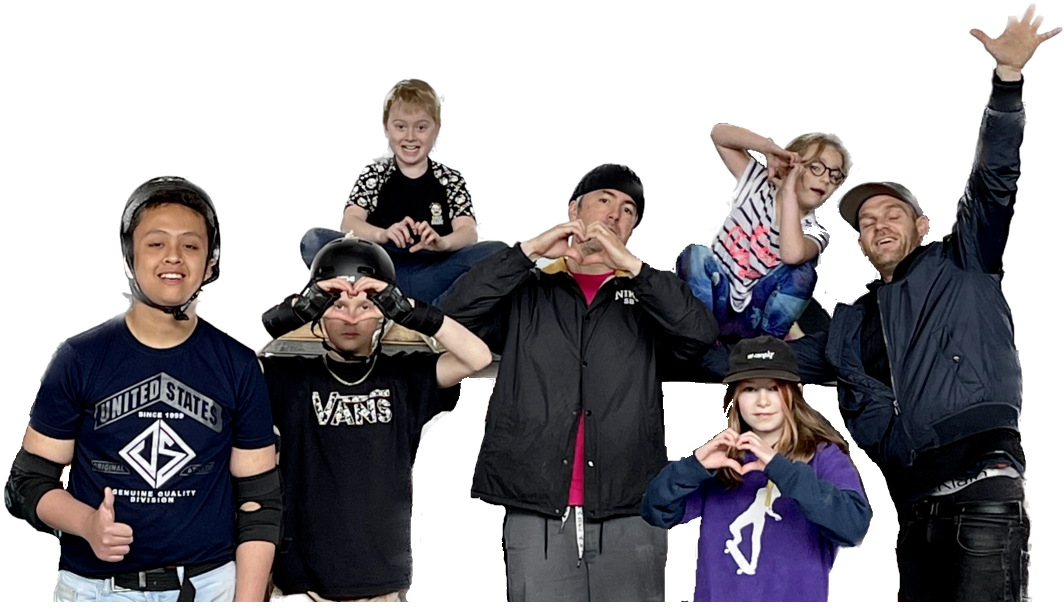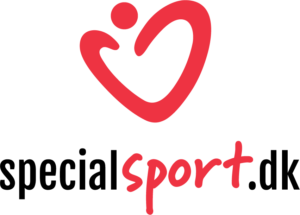Manifest
Defending the right to an active leisure life - also when you are a child or young person at a special school in Denmark.
Who are we fighting for?
The 11,000 children and young people in special schools who are typically challenged in one or more of the following areas:
- the cognitive understanding of the outside world
- physical disabilities
- cognitive attention disorders
- missing or less clear verbal language
Isolation as a condition of life
Many of the children already experience a high degree of isolation and lack of contact with anyone other than their immediate family now, but also as adults. In the future, their free time will be spent with iPads and screens – just as many already do as children. This is documented by Specialsport.dk, as well as many other studies.
It is thus a fact of life that every time a child/young person changes professional environments, all the child’s friendships and peer social contacts are removed, as virtually no one in the target group is able to maintain a relationship outside a school, educational or work environment on their own.
Lack of access to social contact during leisure time
Very few children therefore have social structures with other children and young people outside of school hours. Only 15-20% of this group of children are currently active in a local club, as opposed to more than 80% in the general area.
Despite the fact that there is massive research in the field that shows that this target group also benefits greatly from club life in terms of mental, physical and social well-being and, not least, a significant improvement in life conditions and fitness as an adult.
Core problem
The big failure, however, is that the environment doesn’t believe it can be any different. As a result, measures are rarely taken to change the conditions for the child, which is a huge societal failure of one of our most vulnerable groups.
Specialsport.dk always asks the children about sports when we visit the special schools, and only very few of the children do not see club life as an option. It’s almost always the environment and lack of adaptation that is the barrier, not the child.
Challenges faced by municipalities
From a municipal perspective, it is complex to help special school children into the club life, given that
- The children are typically gathered in inter-municipal school programs with a large area.
- Helping a child get involved in sports requires collaboration across multiple municipalities. One municipality can rarely build a reasonable range of sports and leisure activity options for its own citizens, as the catchment area is typically far too small to create viable communities.
- This requires hands-on collaboration across administrative areas, which many municipalities struggle with or don’t have an eye for. Specialsport.dk’s experience is that ‘ club life lies in the culture and leisure administration’ and IF the issue is addressed, it will only be a question of creating supply.
The complexity
The target group can ‘absolutely’ get active with sports and leisure, with all the amazing benefits for both the individual and society that have been so abundantly proven.
But it’s complex. Over the years, Specialsport.dk has developed and tested many different models, but the following steps are all crucial and necessary as part of the solution:
- Surroundings must want leisure activities on behalf of the target group (parents / staff)
- The opportunities (specific classes and activities) must be set up, clearly communicated and accessible (culture and leisure)
- The child’s environment must have access to concrete advice on specific offers and issues surrounding the child (guidance)
- The barriers that often exist around transportation, support needs and possibly finances must be compensated (children and family / social services)
- Reception and access to the club / service must be carefully planned and organized to create a good and safe reception for the child (civil society)
The solution thus requires collaboration across social actors, administrative areas and a shift in mindset about the target group’s opportunities, as well as a hands-on effort around each individual family. Also check out @Videncenter om Handicap and @Mie Maar Andersen‘s note on ‘recommendations for what works’.

Initiatives and data
At specialsport.dk, we have shown over the years that even this target group can become active in sports and clubs with simple measures. The following activity percentages are repeatedly shown when we carry out an overall special sports effort at a special school with this particular target group:
With no intervention: 10-15% of children are active from the start, without ‘anyone doing anything’.
Knowledge of opportunities: 15-25% of children become active when children and families are informed about the opportunities available to them in the community. Check out our latest online portal of sports opportunities in Denmark at specialsportguide.com.
Handheld intervention: 50-75% of children in the selected special school year groups become active when we make a targeted intervention over just 8 weeks, where we handheld help the children get started with sports and club life. Check out our collaboration with Egmont Fonden for a targeted sport-school-home initiative.
Thus, there is clear data that with a systematic effort, it is possible to help far more children and young people with severe disabilities into club life than is currently the case.
There is huge societal potential waiting, but few municipalities and no administration can do it alone.
Economy
Yes – a handheld effort costs money. But is it expensive? In terms of developing young people who, research shows, become more networked, more self-reliant and have a much better quality of life and content? This calls for an SEA analysis, which is of course on its way, but not quite ready yet.
For DKK 5 million annually, our handheld model can be expanded to the whole country. And by 2033, we will have created an initiative that gives every single child in the special school environment access to sports and clubs. That is, real access. After that, only a small localized advisory effort will be needed.
United forces
With added capital, Specialsport.dk can certainly lift the effort in the special school area. But we would like to invite all you other actors in municipalities, associations and interest organizations to join the collaboration around the families, because it is especially the families who need barrier-reducing solutions and when we stand together we can develop more methods and reach even wider.
Both for the special school students, but also all the other children and young people with special needs in special classes and in the general area of primary school who are also outside the club life. And adults with mental vulnerability or people in residential care – there are many others who also need help gaining access. There’s plenty to tackle, and the more people we can get involved, the better we can achieve the goal of ensuring that everyone in Denmark has real access to sports and club life.


